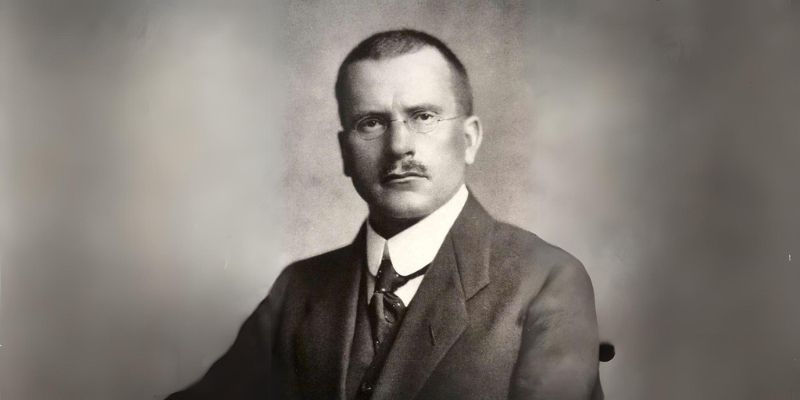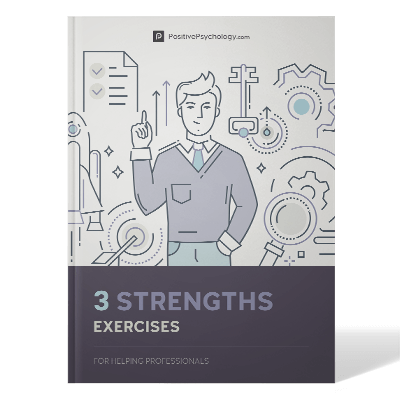Zest in Positive Psychology: Satisfaction in Life and Work
 If you’re feeling tired and burned out, it might be time to tap into your inner ‘zest.’
If you’re feeling tired and burned out, it might be time to tap into your inner ‘zest.’
In positive psychology, zest refers to having energy, enthusiasm, and a passion for life—and it’s vital to your wellbeing (Niemiec, 2018).
After all, studies suggest that individuals with high levels of zest have better mental and physical health and greater life satisfaction (Courtois, 2020).
Indeed, as a strength, it has a powerful impact on our quality of life—even increasing positive health-related behaviors, such as being more active and maintaining a good diet (Weziak-Bialowolska, Bialowolski, & Niemiec, 2023).
Are you eager to tap into your zest? Then read on, as this article explores the meaning behind zest and how cultivating it as a strength creates an opportunity for you, your team, or your clients to flourish.
Before you continue, we thought you might like to download our three Strengths Exercises for free. These detailed, science-based exercises will help your clients realize their unique potential and create a life that feels energizing and authentic.
This Article Contains:
Looking at Zest, It’s Meaning and Definition
The term ‘zest’ and, to a lesser degree, its derivatives ‘zesty’ and ‘zestful’ are found in both psychological theory and research, as well as in popular culture. In this section, we will examine their different meanings and usage in various contexts:
The meaning of personal zest
‘Zest’ is a character strength widely referred to in the scientific literature. Someone displaying personal zest embraces life fully with excitement and energy (Niemiec & McGrath, 2019).
“People who are high in zest are excited to get up in the morning, and they live their lives like an adventure” (VIA Institute On Character, n.d.).
And while zest is associated with happiness, it doesn’t mean everything is effortless and great all the time. Instead, it’s about approaching challenges with energy, positivity, and enthusiasm. Difficulties are overcome and seen as opportunities to learn new skills and knowledge (Courtois, 2020).
Outside of psychology, ‘zest’ has several meanings. Zest is the outer, colored part of the peel of a citrus fruit that adds flavor to food and drinks. Additionally, the term ‘zest’ refers to a lively and enthusiastic attitude or a keen relish for something (Merriam-Webster, n.d.).
The following are two examples of its use taken from literature:
“If you have zest and enthusiasm, you attract zest and enthusiasm. Life does give back in kind.”
Norman Vincent Peale (Norman Vincent Peale Quotes, n.d.)
“Zest is the secret of all beauty. There is no beauty that is attractive without zest.”
Christian Dior (Christian Dior quotes, n.d.)
Psychological research suggests that zest in the workplace is linked to psychological wellbeing, better physical health, and reductions in absenteeism (Peterson et al., 2009). In conjunction with mindfulness, zest has also been associated with greater life satisfaction and lower suicidal ideation (Collins et al., 2016).
What does zesty mean?
‘Zesty’ has gained popularity among younger generations on TikTok as a way to describe someone or something that is exciting, energetic, and lively. It’s often used in captions and video hashtags and has become a familiar term among the platform’s teenage and young adult users (Sapru, 2022).
According to the Britannica Dictionary definition, the word ‘zesty’ can also be used in cooking when referring to intense, spicy, or citrus flavors or to describe someone lively and pleasing (Encyclopedia Britannica, n.d.).
While not explicitly referred to in the psychological literature, the term might refer to someone’s behavior when they exhibit the strength ‘zest’—showing a high degree of autonomy, and connection with others, while focusing on reaching goals (Niemiec, 2018).
As such, the term ‘zesty’ has multiple meanings and connotations depending on the context, and it is crucial to consider both when interpreting and understanding its meaning.
The following example of its use is taken from cooking:
“Although Japanese cooking aims to spotlight the natural flavors of ingredients, zesty accents often appear to provide contrast.”
Victoria Abbott Riccardi (Goodreads, n.d.).
Zestful meaning – Is there such a word?
‘Zestful’ is the adjective form of zest. The zestful person is lively, enthusiastic, and relishes life—they have the qualities of zest. It is the opposite of the word ‘zestless,’ which refers to an individual lacking in zest (Merriam-Webster, n.d.).
Psychologist research has found that ‘zestful’ adults enjoy great satisfaction in life and work, while the young experience greater happiness and have a better experience of school (Courtois, 2020).
The Cambridge Dictionary offers the following examples of the word ‘zestful’ in use in literature (Cambridge Dictionary, n.d.):
We look forward to those zestful contributions.
She was a good musician, too, and the possessor of a zestful, vivacious personality.
Her lively, zestful, and fiery performances have impressed many audiences.
And while direct references to the term ‘zestful’ may lack in the psychological literature, it is closely connected to research into zest.
A 2004 study recognized the power of ‘positive life orientation’ (similar to ‘zestful living) in protecting psychological wellness as we age (Pitkala et al., 2004). More recently, research has confirmed links between job passion and innovative behavior in the workplace (Shi, 2012).
What does it mean to have a zest for life?
A ‘zest for life’ is characterized by a positive attitude and excitement about one’s experiences and activities. It can be cultivated through setting and working toward goals, being open to new experiences, and having a sense of purpose (Merriam-Webster, n.d.b.; Newman, 2016).
Famous quotes referring to an individual’s energy and passion for life include (Walt Disney Quotes, n.d.; Bertrand Russell Quotes, n.d.):
“In bad times and in good, I’ve never lost my sense of zest for life.”
Walt Disney
“What hunger is in relation to food, zest is in relation to life.”
Bertrand Russell
A 2013 study focusing on 65- and 75-year-olds in Finland and Sweden found that almost 85% of participants had a ‘zest for life.’ Data suggests it improves the aging process and is associated with physiological and psychological wellness—including a lowered risk of depression (Glasberg, Pellfolk, & Fagerström, 2013).
As with ‘zest,’ the term is also related in the research literature to building resiliency and protection from suicidal tendencies (Shahram et al., 2021).
High on life meaning
In popular culture, being ‘high on life’ is a powerful emotion—associated with realizing the wonder of existence. It is frequently accompanied by gratitude for family, friends, and what life offers (High on life, n.d.).
While the following quote by Martin Seligman refers to positive psychology and the pursuit of happiness, it also captures the meaning of being ‘high on life’ (Seligman, 2002): It
“[t]akes you through the countryside of pleasure and gratification, up into the high country of strength and virtue, and finally to the peaks of lasting fulfillment: meaning and purpose.”
Martin Seligman, founding father of positive psychology
In the psychological literature, several studies refer directly to being ‘high on life.’ However, these studies report on interventions for excessive drinking in youths and young adults, rather than being positive psychology-led (Pisinger et al., 2020).
However, we also find the phrase used in connection with finding meaning in life and building fulfillment in what we do—both of which have strong cultural influences (Steger et al., 2008).
Zest in the Context of Character Strengths

The two most widely used models (and assessments) of strengths are the VIA (Values in Action) and the Clifton StrengthsFinder. Both help individuals understand and develop their unique abilities and talents (Hickman & Evans, 2022).
The VIA Survey is based on the idea that six core values (or character trait groupings) are universal to all human beings: wisdom, courage, humanity, justice, temperance, and transcendence. These strengths are the foundation for leading a good and fulfilling life. The survey measures 24-character strengths associated with these six and provides a detailed report on an individual’s strengths profile (Niemiec & McGrath, 2019).
On the other hand, the Clifton StrengthsFinder model is based on the idea that people can develop innate talents into strengths. The model identifies 34 strengths and provides a report on an individual’s top strengths. The Clifton model emphasizes the importance of using one’s strengths in daily life and encourages individuals to focus on them rather than trying to improve their weaknesses (Hickman & Evans, 2022).
Both models help people understand their unique abilities and talents, but the VIA Survey, in particular, focuses on identifying universal human strengths, while the Clifton StrengthsFinder focuses on identifying innate talents and encouraging individuals to focus on them in their daily lives (Hickman & Evans, 2022)
So where does ‘zest’ fit in?
Within the Values in Action Model (VIA), ‘zest’ is grouped under the heading ‘courage’ along with ‘bravery,’ ‘perseverance,’ and ‘honesty.’ Such strengths help individuals exercise their will and face adversity.
Indeed, someone displaying zest is vital, enthusiastic, energetic, and does things wholeheartedly (Niemiec & McGrath, 2019). ‘Zest’ is one of the top strengths linked to life satisfaction—closely associated with engagement and meaning. Regarding work, it associates with seeing a career as a calling and greater workplace satisfaction—as captured in the following definition for zest (Niemiec, 2018, p. 130):
Zest is “[a]pproaching life with excitement and energy; not doing things halfway or half-heartedly; living life as an adventure; feeling alive and activated.”
Examples of Other Personal Strengths
The advantage of the VIA model is that the 24-character strengths associated with each of the six virtue groupings offer a common language that “describe what is best in human beings” (Niemiec & McGrath, 2019, p. 2):
The following strengths grouped under six virtues are innate qualities that can be developed and used to improve one’s wellbeing and effectiveness in various life domains, including work (Niemiec & McGrath, 2019; Niemiec, 2018):
Wisdom and Knowledge:
- Creativity
- Curiosity
- Love of learning
- Perspective
- Judgment
Courage:
- Bravery
- Perseverance
- Honesty
- Zest
Humanity:
- Love
- Kindness
- Social intelligence
Justice:
- Teamwork
- Fairness
- Leadership
Temperance:
- Forgiveness
- Humility
- Prudence
- Self-regulation
Transcendence:
- Appreciation of beauty and excellence
- Gratitude
- Hope
- Humor
- Spirituality
The VIA survey is a tool for assessing one’s strengths, and the results can create a personalized plan for cultivating and using those strengths in work and other areas of life.
The model aims to help individuals and organizations identify and develop their strengths to improve their performance and wellbeing.
According to the research, ‘zest’ is most closely related to the following five strengths (Niemiec & McGrath, 2019; Niemiec, 2018, p. 130):
- Hope – expecting the best in the future and being prepared to work for it.
- Curiosity – taking an interest in an experience for its own sake.
- Gratitude – feeling and expressing deep gratitude for life and those in it.
- Perseverance – finishing what we begin and persistence in the face of obstacles.
- Humor – enjoying laughter and seeing the light side.
As such, boosting any of the above strengths is likely to support the development of ‘zest.’
7 Ways to Cultivate More Zest in Life

So how do we create more zest in ourselves and our lives?
The most powerful approach to strength building is to become more ‘aware’ of our strength (in this case ‘zest’), then ‘explore’ more deeply by seeing its connection to our past, present, and future, and finally ‘apply’ it in the form of action planning and concrete goals.
The following questions and associated actions will help boost zest and related strengths (Niemiec & McGrath, 2019; Niemiec, 2018, p. 130):
- Can you reflect on past experiences and identify situations in which you felt particularly creative and motivated?
-
- Try to recreate or incorporate elements of those situations into your daily routine to boost creativity.
- Make a list of new and challenging activities that align with your interests, and schedule them in your calendar to stretch your creative muscles and boost self-improvement.
- How does tapping into your creativity assist you in finding solutions to challenges or problems?
-
- Practice brainstorming and generate multiple solutions for a problem, don’t stick to the first idea that comes to mind.
- Seek out learning opportunities or activities that challenge your thinking and problem-solving skills.
- What potential obstacles or barriers prevent you from fully expressing your creativity?
-
- Reflect on the fears, doubts, or negative self-talk that may hold you back and try to reframe them positively.
- Seek out supportive people (‘zest buddies’) and environments that encourage creative expression.
- What are the conditions or situations in which you feel most energized and passionate about life?
-
- Make a list of the things that bring you joy (where you find your ‘zest energy’) and schedule them in your calendar regularly.
- Surround yourself with people and environments that align with your values and passions.
- How does cultivating a zestful attitude positively impact different areas of your life, such as your relationships, work, or overall wellbeing?
-
- Keep a gratitude journal and note the things you are thankful for every day.
- Set small, achievable goals, and celebrate your progress and accomplishments.
- How can incorporating healthy habits, such as exercise, nutrition, and self-care, contribute to a more zestful outlook on life?
-
- Incorporate regular physical activity into your routine.
- Prioritize getting enough sleep and eating a balanced diet.
- How do the attitudes and energy levels of those around you affect your sense of zest and motivation?
-
- Surround yourself with people who have a positive attitude and vitality.
- Practice mindfulness; be aware of how others’ energy levels influence you and take the necessary steps to protect yours.
Why have I lost my spark and feel demotivated? – Sadhguru
The Zest for Life Scale (ZLS)
The Zest for Life Scale (ZLS) is a psychological measurement tool used to assess an individual’s enthusiasm and energy for living. It measures two critical dimensions of zest for life: general zest and engagement (Collins et al., 2016).
The general zest dimension assesses an individual’s overall desire to live and their positive outlook on life. Questions on this dimension include “I am embracing life” and “I try to enjoy life no matter what.”
The engagement dimension reflects the individual’s current engagement with life and how much they actively participate in their life.
The ZLS can identify areas where clients need support or intervention to increase their zest for life. We can also use it to evaluate the effectiveness of interventions aimed at increasing zest for life (Collins et al., 2016).
The Zest for Life Scale is discussed in detail in this PDF, which includes contact information for the University of Western Australia.
PositivePsychology.com Resources
We have many resources available for therapists who wish to support their clients as they develop their ‘zest’ or other associated strengths (hope, curiosity, gratitude, perseverance, and humor).
Our free resources include the following:
- Aware-explore-apply model
Once the client has identified their character strengths, this model can help them understand and utilize them better. - Imagine The Worst…
This exercise uses exaggeration techniques to challenge catastrophizing with humor. - Gratitude journal
Ask your client to capture what they are grateful for and focus on the good things that have happened that day.
More extensive versions of the following tools are available with a subscription to the Positive Psychology Toolkit©, but we describe them briefly below:
- Personal energy restoration plan
Sometimes we get low on energy. This tool helps by creating a restoration plan to maximize the amount of time available for rest by considering how to:
-
- Reduce working hours
- Take breaks during the working day
- Get enough sleep
- Switch off from work
Over two weeks, monitor your working hours, when you take a break, how much sleep you are getting, and how much leisure time.
Use the results to plan the changes you would like to make to your schedule to live a more balanced and zesty life.
- Hope map
Seeing a direct connection between the future we want and existing behaviors and attitudes can boost effort and commitment.
This exercise embraces the Hope theory and encompasses ‘willpower’ (agency) and ‘waypower’ (pathways) to help clients achieve their goals. It includes five steps:
Step 1: Write down a goal you would like to achieve
Step 2: Write down several actions or pathways to achieve that goal
Step 3: Identifying at least one obstacle that may block your path
Step 4: Identify strategies to overcome the obstacles
Step 5: Capture ideas for maintaining your energy and motivation
Review what you have written to determine which pathway you will choose first.
A Take-Home Message
Zest is a psychological term that refers to having vitality, enthusiasm, and passion for life.
Research suggests that people with high levels of zest tend to have better mental and physical health and greater life satisfaction. It can be cultivated as a strength and promotes positive health-related behaviors, such as exercising and maintaining a good diet.
Studies show that having zest in the workplace is associated with psychological wellbeing and better physical health, which can reduce absenteeism.
As a therapist, you can help your clients lead more fulfilling lives and improve their job satisfaction by increasing their zest. You can enhance their passion for living and overall wellbeing by encouraging a positive and energetic attitude towards challenges and seeing life as an adventure.
Work with your clients, helping them become more aware of zest–along with related strengths, hope, curiosity, gratitude, perseverance, and humor. Let them understand and talk about its connection with their past, present, and future, and make it more prominent in their lives.
We hope you enjoyed reading this article. Don’t forget to download our three Strengths Exercises for free.
- Bertrand Russell Quotes. (n.d.). Quotefancy. Retrieved January 25, 2023, from https://quotefancy.com/quote/773456/Bertrand-Russell-What-hunger-is-in-relation-to-food-zest-is-in-relation-to-life
- Cambridge Dictionary. (n.d.). zestful. Retrieved January 25, 2023, from https://dictionary.cambridge.org/dictionary/english/zestful
- Christian Dior Quotes. (n.d.). BrainyQuote. Retrieved January 25, 2023, from BrainyQuote.com Web site: https://www.brainyquote.com/quotes/christian_dior_102871
- Collins, K. R., Best, I., Stritzke, W. G., & Page, A. C. (2016). Mindfulness and zest for life buffer the negative effects of experimentally-induced perceived burdensomeness and thwarted belongingness: Implications for theories of suicide. Journal of Abnormal Psychology, 125(5), 704–714.
- Courtois, S. L. (2020). True grit? Maybe teaching zest is best. Tes Magazine. Retrieved January 24, 2023, from https://www.tes.com/magazine/archived/true-grit-maybe-teaching-zest-best
- Encyclopedia Britannica (n.d.). The Britannica Dictionary. Encyclopedia Britannica. Retrieved January 24, 2023, from https://www.britannica.com/dictionary/zesty
- Glasberg, A. L., Pellfolk, T., & Fagerström, L. (2013). Zest for life among 65- and 75-year-olds in northern Finland and Sweden – a cross-sectional study. Scandinavian Journal of Caring Sciences, 28(2), 328–336.
- Goodreads. (n.d.). Untangling my chopsticks quotes by Victoria Abbott Riccardi. Goodreads. Retrieved January 25, 2023, from https://www.goodreads.com/work/quotes/297757-untangling-my-chopsticks-a-culinary-sojourn-in-kyoto
- Hickman, A., & Evans, M. C. (2022). How do Cliftonstrengths and the Via survey compare? Gallup.com. Retrieved January 24, 2023, from https://www.gallup.com/cliftonstrengths/en/249878/compare-via-survey-cliftonstrengths.aspx
- High on life. (n.d.). Urban Dictionary. Retrieved January 25, 2023, from https://www.urbandictionary.com/define.php?term=High+on+Life
- Merriam-Webster. (n.d.). Zest definition & meaning. Merriam-Webster. Retrieved January 24, 2023, from https://www.merriam-webster.com/dictionary/zest
- Merriam-Webster. (n.d.b.). Merriam-Webster. Retrieved January 25, 2023, from https://www.merriam-webster.com/dictionary/zest%20for%20life
- Newman, K. (2016). Four reasons to cultivate zest in life. Greater Good. Retrieved January 25, 2023, from https://greatergood.berkeley.edu/article/item/four_reasons_to_cultivate_zest_in_life
- Niemiec, R. M. (2018). Character strengths interventions: A field guide for Practitioners. Boston: Hogrefe.
- Niemiec, R. M., & McGrath, R. E. (2019). The power of character strengths: Appreciate and ignite your positive personality. Cincinnati, OH: VIA Institute on Character.
- Norman Vincent Peale Quotes. (n.d.). BrainyQuote.com. Retrieved February 6, 2023, from BrainyQuote.com Web site: https://www.brainyquote.com/quotes/norman_vincent_peale_386190
- Peterson, C., Park, N., Hall, N., & Seligman, M. E. (2009). Zest and work. Journal of Organizational Behavior, 30(2), 161–172.
- Pisinger, V. S., Hoffmann, S., Pålsson, L., Dalum, P., Grønbæk, M., Tolstrup, J., Thygesen, L. C., & Krølner, R. F. (2020). ‘High schools high on life’: Development of an intervention to reduce excessive drinking in Danish high schools.
- Pitkala, K. H., Laakkonen, M. L., Strandberg, T. E., & Tilvis, R. S. (2004). Positive life orientation as a predictor of 10-year outcome in an aged population. Journal of Clinical Epidemiology, 57(4), 409–414.
- Sapru, D. (2022). What does this new TikTok trend zesty consist of? Mean/Slang. The Courier Daily. Retrieved January 24, 2023, from https://www.thecourierdaily.com/what-new-tiktok-trend-zesty/24893/
- Seligman, M. (n.d.). Pursuit of Happiness. Retrieved January 25, 2023, from https://www.pursuit-of-happiness.org/history-of-happiness/martin-seligman-psychology/
- Seligman, M. E. P. (2002). Authentic Happiness: Using the New Positive Psychology to Realize Your Potential for Lasting Fulfillment. New York, NY: Free Press.
- Shahram, S. Z., Smith, M. L., Ben‐David, S., Feddersen, M., Kemp, T. E., & Plamondon, K. (2021). Promoting “Zest for life”: A systematic literature review of resiliency factors to prevent youth suicide. Journal of Research on Adolescence, 31(1), 4–24.
- Shi, J. (2012). Influence of passion on innovative behavior: An empirical examination in People’s Republic of China. African Journal of Business Management, 6(30).
- Steger, M. F., Kawabata, Y., Shimai, S., & Otake, K. (2008). The Meaningful Life in Japan and the United States: Levels and correlates of meaning in life. Journal of Research in Personality, 42(3), 660–678.
- VIA Institute On Character. (n.d.). Retrieved January 24, 2023, from https://www.viacharacter.org/character-strengths/zest
- Walt Disney Quotes. (n.d.) Quotefancy. Retrieved January 25, 2023, from https://quotefancy.com/walt-disney-quotes
- Weziak-Bialowolska, D., Bialowolski, P., & Niemiec, R. M. (2023). Character strengths and health-related quality of life in a large international sample: A cross-sectional analysis. Journal of Research in Personality, 103, 104338.
Let us know your thoughts
Read other articles by their category
- Body & Brain (49)
- Coaching & Application (57)
- Compassion (26)
- Counseling (51)
- Emotional Intelligence (24)
- Gratitude (18)
- Grief & Bereavement (21)
- Happiness & SWB (40)
- Meaning & Values (26)
- Meditation (20)
- Mindfulness (45)
- Motivation & Goals (45)
- Optimism & Mindset (34)
- Positive CBT (28)
- Positive Communication (20)
- Positive Education (47)
- Positive Emotions (32)
- Positive Leadership (18)
- Positive Parenting (4)
- Positive Psychology (33)
- Positive Workplace (37)
- Productivity (16)
- Relationships (46)
- Resilience & Coping (36)
- Self Awareness (21)
- Self Esteem (38)
- Strengths & Virtues (32)
- Stress & Burnout Prevention (34)
- Theory & Books (46)
- Therapy Exercises (37)
- Types of Therapy (64)




What our readers think
I find the content imperative to continued prosperity
Increasing social contact is not ‘so simple’. People don’t have time to meet for more than an hour every few weeks; this is not enough for friendship. Little relationship-building goes on during sports teams or clubs; it is the same with volunteering—people come for the activity, but don’t socialize outside that activity. People rarely have time to even meet for coffee. Old friends live hundreds, or thousands, of miles away; there is often no relationship after one or both physically relocate. I’ve lived in in my current home ten years, and none of my friends from work live close enough to accept a dinner invitation.
Great article! I find that keeping track of the little moments in life daily, like keeping a gratitude journal helps to build up my zest and appreciation for life. Doing it via a mobile app has been easy and convieinet
I use this online gratitude journaling app: https://tapabit.com/zest/